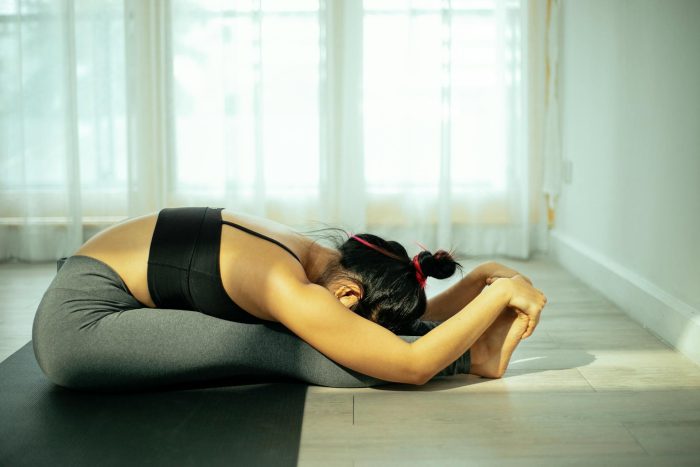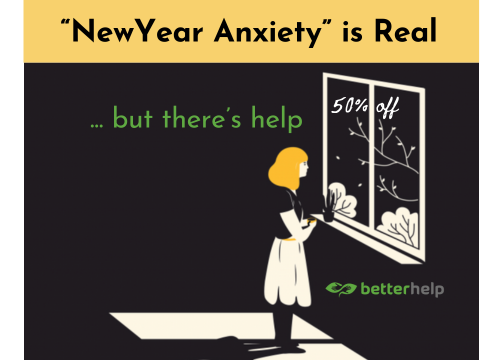{*Did you know you can write on Elephant? Here’s how—big changes: How to Write & Make Money or at least Be of Benefit on Elephant. ~ Waylon}
~
I always preferred the safe space of my home when it came to practicing yoga, compared to shiny or boho studios. (Isn’t it funny, how they always try to take the decoration in this two ways?)
Being a yoga teacher myself, the only class I actually enjoyed was the one I had in India while I was doing my YTT (yoga teacher training), in an airy room with 15 classmates overlooking the foothills of the Himalayas. I’ve always thought that the at-home yoga practice is more beneficial for teachers or advanced students who know what they are doing since there’s no one to correct and align your asanas, making it easier to prevent injuries.
I spent the past two months planting trees in Iceland. That’s intense and is hard on the body so when I came home, I decided to take out a whole month for myself—first because it’s my birthday month and I didn’t have a chance to spend time alone during the planting season and missed really connecting with myself, and also to recover.
I imagined I would wake up every morning excited to return to my Ashtanga practice (it’s too hard to follow it during planting season), stretch out, balance, and strengthen my body. Well, that’s not what happened.
After the first few days, I became less enthusiastic to get out of the bed and do any kind of yoga. I was exhausted to the maximum, but my body still craved gentle movement to stretch the muscles, but my mind and soul weren’t into it. I started with light classes to make sure I was going gentle on myself, but they didn’t spark a light in me. I was bored during classes. (I follow videos of another teacher; otherwise, if I lead a class for myself, I get lost in it, and it will be a 10-hour long practice. I just can’t stop.) I felt more and more uninspired to do the classes and found every excuse to skip my practice for the day.
This went on for about a week when I accidentally clicked on one of the more advanced videos. I purposely avoided them because I wanted to go light, to give space to recovery and practice self-love through gentle treatment. Well, screw that! I followed the whole 40-minute class through, with stamina, never running out of breath, and was able to perform all the more difficult poses, despite all my expectations. Normally planting makes me fatigued, inflexible, and I can’t keep up with the pace and the breathing. I was surprised that I was actually able to perform so well.
Then the next day, I tried again, now searching for an intermediate or advanced class, and I enjoyed it even more than the day before. I could feel soreness in some muscles I don’t use that much, but I felt energized and joyful during and after the practice. I actually couldn’t wait for the next one and was already bookmarking the videos I would follow later. I noticed I started to anticipate the yoga classes and even left my mat out because I just randomly showed up on it to stretch my back out after writing for hours in front of the computer. Now I was doing two sessions a day again, on the mat and not the usual bedtime yoga in the bed.
A couple of days ago, I thought I would take it more slowly. Since I was doing yoga every day, my body might need a little rest, so I opted for a beginner friendly, easier class, and I felt the same way as before the accidental intermediate class. This is just not enough anymore. I diagnosed the problem quickly.
I thought I’d do good for my body and myself by doing a lighter class, but it completely backfired. I also didn’t think that I’d be still on a higher level, considering that on planting days I am more than happy with the easy, beginner classes, so I assumed I would need that for recovery too. But my body said no. She was screaming for more!
So I sat down and journaled about the experiences of the last couple weeks on my yoga mat, and came up with a wee list for my own students about signs indicating that someone might have outgrown their yoga practice and it’s time to level up. So here they are.
Signs you are ready to elevate your yoga practice:
>> You aren’t motivated anymore to do your practice. You might be in need to level up your practice or to explore a different style.
>> You don’t look forward to class but feel guilty if you miss it.
>> Your yoga routine has become a chore that you have to do.
>> You lost momentum and stopped advancing in your poses; you don’t see any progress in your flexibility or stamina or even peace of mind. Even if it doesn’t feel easy, you don’t have to “work for it” anymore.
>> The judgement-free yoga space of your home became a battle of comparison—with yourself, with others, or even with your instructor.
>> Your lifestyle has undergone big changes. We have to look at life holistically, and I realized that I can’t balance something with the same thing. When my life is slow and chilled, a yin yoga class bores me to death; I need something more vigorous. When my days are on repeat, a vinyasa class makes me go nuts. I have everything on repeat all day, why do I have to repeat the same vinyasas over and over again, too? On the contrary, when life is flowing fast, I can really balance things with that yin class.
Now, if you visit a studio to attend yoga classes, good for you. All you have to do is to discuss this with your teacher and sign up for another type or level of class. But if you’re a home practitioner, it might be a bit more difficult than just clicking on the advanced video. But good news: there are lots of things you can do right now to elevate your at home yoga practice!
How can you make your yoga experience ever-evolving?
The most obvious step is to aim for a higher level class, if you consider yourself beginner, try an intermediate class, if you do vinyasa how about checking out an ashtanga practice?
>> Go beyond the asana. For me, it helped a lot at the beginning of my yoga journey when I started to pay attention to correct breathing throughout the class. When it became second nature having a drishti (focal point) was game changer. Now I focus more on working with affirmations and “mat intentions” during my classes, too.
>> Get creative! Don’t only experiment with new levels and style but also with new poses. Choose a pose you want to nail, and once the practice is done, stay longer on the mat to focus on that single pose or how long you can stay in one.
>> Use props to help you reach depths that seemed unimaginable before.
>> Include practicing the other limbs of yoga too and take them with you off the mat. Try classes that aren’t only devoted to the poses but focus more on breath work, meditation, yogic philosophy too.
>> Practice what you resist. There’s a yogic saying “the asana you avoid the most is the one you need the most.” What you try to ignore should be a priority to work on.
>> Practice in front of a mirror. In my house, I only have a mirror in the bathroom, but we travel a lot with my partner due to work and often have accommodations with huge mirrors, so I can’t avoid seeing myself. I used to hate it, but then I realized that it helped me to fix my misaligned poses or balance the two sides of my body (one of my shoulders is never level with the other).
Next time your yoga practice reaches a plateau, remember that it doesn’t have to look any particular way. It’s an embodied holistic experience, and as with every relationship in our lives, the relationship with our practice is ever-changing. There are ups and downs and sometimes we need to adjust, change something, or rethink our approach to the whole thing.
~
{Please consider Boosting our authors’ articles in their first week to help them win Elephant’s Ecosystem so they can get paid and write more.}












Read 2 comments and reply